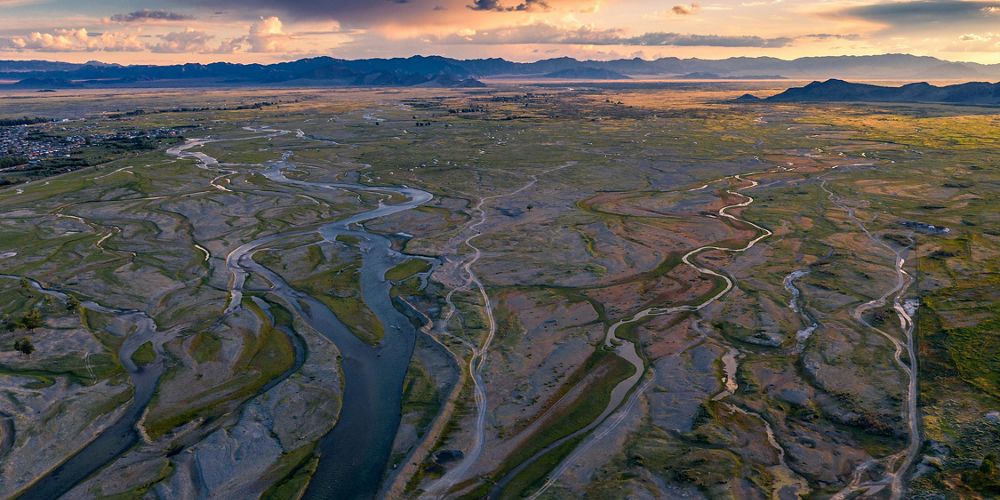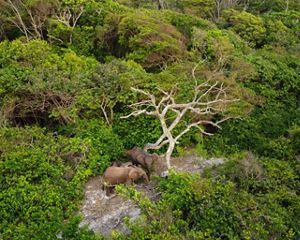The U.S. Foundation for International Conservation Act Will Protect Wildlife, Lands and Waters
USFICA is bipartisan legislation that will invest funding into international conservation where we need it most.
Scientists predict that over one million species are at risk of extinction within the next few decades. And the rate at which we’re losing plant and animal species is speeding up due to habitat destruction and natural disasters such as wildfires and drought.
These signs of species and habitat loss are everywhere. Tropical forests are in retreat. Coastal wetlands are deteriorating worldwide. These growing threats and challenges not only jeopardize our planet’s future, but also threaten peoples’ livelihoods and safety. That’s why it’s never been more important to accelerate conservation efforts in some of the most species rich, yet vulnerable, parts of the world.
New federal legislation passed by Congress will help address these challenges.
In December 2024, U.S. Congress greenlit federal legislation, called the U.S. Foundation for International Conservation Act. It will establish a foundation to leverage U.S. government, private sector and philanthropic funding to support local communities and Indigenous Peoples around the world who manage protected and conserved areas.
This bipartisan legislation was sponsored by Sens. Chris Coons, D-Del., and Lindsey Graham, R-S.C., with companion legislation from Reps. Michael McCaul, R-Texas, and Gregory Meeks, D-N.Y., in the House. In addition, the leaders of Congress’s International Conservation Caucus were instrumental in spearheading this important legislation.
Read our statement on USFICA
Congress Passes USFICA
On December 18, Congress passed the U.S. Foundation for International Conservation Act, greenlighting a major investment in global conservation! See our statement to learn how this will accelerate conservation, improve U.S. national security and empower Indigenous Peoples and local communities around the world.

This legislation will incentivize private and philanthropic funding to match U.S. government funds for conservation.
Solving the biodiversity and climate crisis will require coordination across governments, private sector entities, local communities, Indigenous Peoples and other stakeholders.
The U.S. Foundation for International Conservation Act will incentivize philanthropic and private giving to match government funds by investing new and additional resources to complement traditional U.S. foreign assistance to biodiversity conservation. Combined, this will provide consistent funding for protected areas globally and ensure the long-term protection of these critical landscapes and habitats.
Why is this funding needed right now? Governments around the world have funded conservation for decades, but the current funding is no longer adequate to meet the growing challenges we face.
USFICA will help close this conservation funding gap. According to recent research, the world needs to spend between $598 and $824 billion more each year to halt species extinctions and restore natural areas. While USFICA won't close this gap on its own, it will help inspire other efforts at the global level.
And it already is. On average, every dollar that the government invests in international conservation results in a $4 contribution from the private sector. So, USFICA is expected to inspire hundreds of millions of additional dollars for this work from corporations and philanthropic entities, many of which have already pledged their support.
Legislation that Advances Global Conservation
-
$2B
Amount that will be raised to support protected areas and communities over the next decade.
-
70%
This legislation will increase conservation efforts for monitored wildlife populations which have decreased 70% from 1970 to 2018.
-
10-20
The bill will develop a multi-year model to more effectively provide ongoing and sustainable support for global conservation projects.


Quote: Jennifer Morris
This act is a critical step toward promoting long-term, effective conservation strategies for lands and waters across the planet. It is also a commitment to our international partners that the United States is ready to do its part.
This legislation will have a lasting impact on Indigenous communities and our most threatened landscapes.
Indigenous and local communities are often highly effective stewards of their land. In most parts of the tropics, for example, indigenous-managed forests have lower rates of deforestation than state-managed protected areas. USFICA will provide up to $100 million each year in federal funds for community-led international conservation work, such as that being done in Mongolia.
Mongolia’s grasslands are one of the planet’s most threatened ecosystems. Covering an area three times the size of California, they provide a rare refuge for native wildlife, such as snow leopards, argali sheep, gazelles and saiga—a critically endangered antelope. These grasslands also represent the world’s ninth largest peatlands, a major source for the capture, removal and storage of carbon.
Over 200,000 nomadic families rely on these grasslands for their livelihoods. With only a fraction currently protected, Mongolia has committed to conserving 30% of the country’s landscapes by 2030.
Project funding afforded through public-private partnerships, similar to those that will be established through USFICA, will help create new protections for millions of acreas of Mongolia’s lands and grasslands.


This bill will invest in conservation to support U.S. national security and regional stability around the world.
Evidence has shown, time and again, that political stability depends on the stability of the natural world. The loss of nature creates vacuums for crime, violence and war. Examples can be found around the world from armed conflicts in Syria and Somalia which intensified because of severe droughts to extreme weather events which displace an average of 21.5 million people each year.
By safeguarding threatened natural habitats and the biodiversity they support, USFICA will improve national security in the U.S. and promote regional stability worldwide.
Conservation also stimulates economic growth by providing jobs, skills training and local revenue. By supporting and enlisting the help of local and Indigenous communities, we can better implement on-the-ground conservation and restoration work and improve the quality of life for those who live and work around important protected areas.



